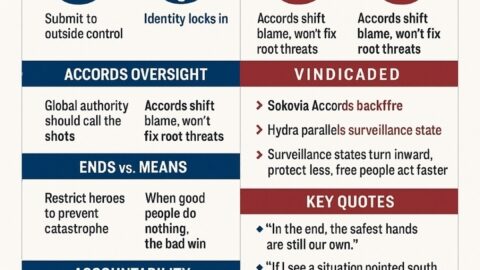Robert Stinnett’s Day of Deceit: The Truth About FDR and Pearl Harbor is a controversial book that presents a provocative argument about the events leading up to the Japanese attack on Pearl Harbor on December 7, 1941. Published in 1999, the book asserts that President Franklin D. Roosevelt (FDR) and key members of his administration knew in advance about the impending attack but allowed it to happen in order to draw the United States into World War II.
Key Arguments in the Book
Roosevelt’s Desire for War: Stinnett argues that FDR wanted the United States to enter World War II to support its allies, particularly Great Britain, against Nazi Germany. However, public opinion in the U.S. was largely isolationist at the time, and there was little support for entering the war. According to Stinnett, Roosevelt believed that a direct attack on U.S. soil would shift public opinion in favor of war.
Eight-Point Plan: Stinnett claims that FDR had an “eight-point plan” to provoke Japan into attacking the United States. This plan, as alleged by Stinnett, involved actions such as placing an oil embargo on Japan, freezing Japanese assets, and moving the Pacific Fleet to Pearl Harbor—steps that would provoke Japan into aggressive action.
Interception of Japanese Communications: One of the core elements of Day of Deceit is the assertion that the U.S. military had cracked Japanese codes well before the attack and was intercepting and deciphering Japanese military communications. Stinnett claims that these intercepted communications clearly indicated Japan’s intentions to attack Pearl Harbor.
The Navy’s Role: Stinnett presents evidence that key figures in the U.S. Navy were aware of Japan’s plans but did not pass the information on to commanders in Hawaii, leaving the Pacific Fleet vulnerable to attack. He claims that officials deliberately withheld intelligence from those on the ground to ensure that the attack would be a surprise.
Cover-Up: According to Stinnett, after the attack, Roosevelt and his administration engaged in a deliberate cover-up to hide the fact that they had prior knowledge of Japan’s plans. This cover-up allegedly extended to the post-war period, and Stinnett argues that key documents and communications were classified or destroyed to prevent the truth from coming to light.
Evidence Presented
Stinnett bases much of his argument on previously classified documents obtained through the Freedom of Information Act (FOIA), including military communications, memos, and intelligence reports. He claims that these documents support his theory that the U.S. had foreknowledge of the attack and that the Roosevelt administration took deliberate steps to provoke Japan into war.
Reception and Criticism
Day of Deceit has been highly controversial and has sparked intense debate among historians, scholars, and the public. Some have praised Stinnett for bringing to light new evidence and for challenging the established narrative about Pearl Harbor.
Legacy of the Book
Day of Deceit remains a key work for those who subscribe to conspiracy theories regarding the Pearl Harbor attack and the U.S. entry into World War II. While its conclusions are debated and controversial, the book has prompted further discussion and research into the intelligence failures or possible manipulations surrounding one of the most significant events in U.S. history.
Wall Street and the Rise of Hitler

Additional Reading:








One Response
I have this book myself. Very eye-opening.
Part of what led up to the confrontation of Japan is what started to develop at the turn of the 20th Century all the way to the beginning of WWII, which was an operations contingency plan that developed over the years towards a future war with Japan, known as Plan Orange.
FDR and his staff probably utilized this in their plans developed to make Japan do the first strike.
That is the real “date of infamy” that FDR created. It kinda reminds me of what is going on now with the US and Europe poking the Russian bear to see what it will do.